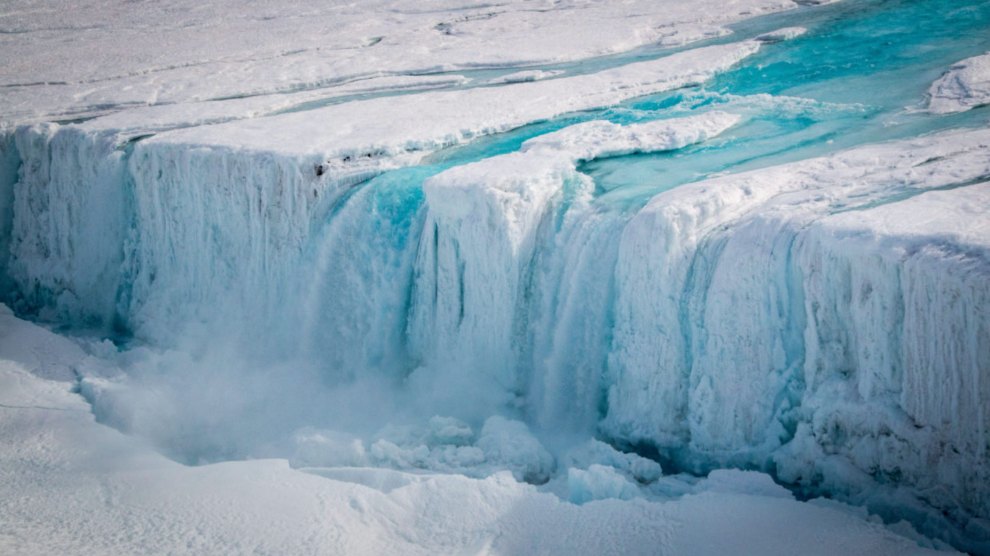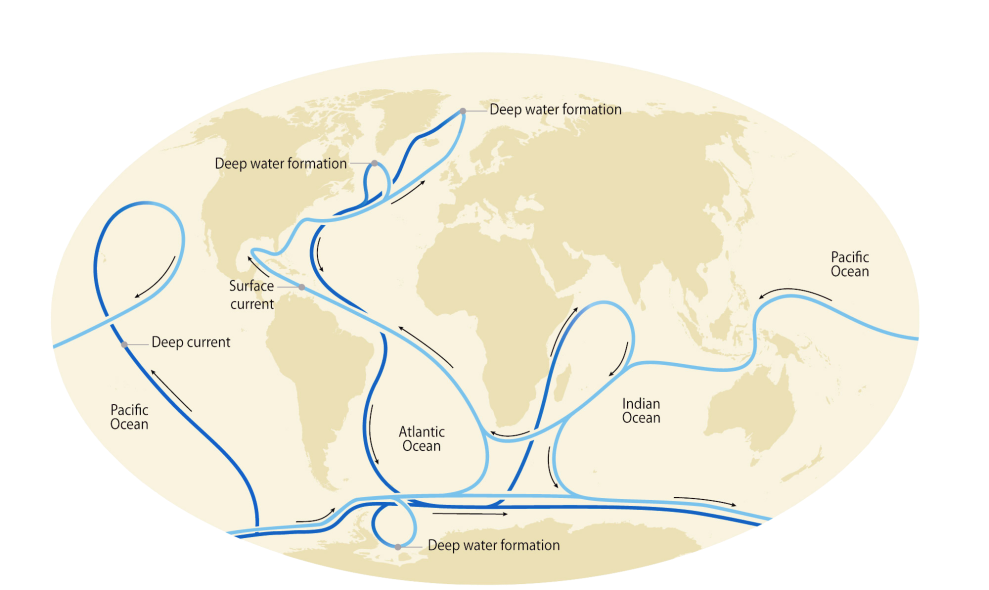In an arid pocket of Arizona’s rural southwest, thirsty tufts of alfalfa are guzzling unlimited amounts of groundwater — only to become fodder for dairy cows some 8,000 miles east.
This Sonoran Desert field of green, cultivated by a Saudi Arabian dairy giant, has become a flashpoint among residents, who resent the Middle Eastern company’s unbridled — and steeply discounted — usage of a dwindling regional resource.
But because the Vicksburg, Ariz., property is just one of many farms in the neighborhood growing water-intensive grains, it is also turning the spotlight on legal loopholes in state groundwater laws that enable such use in the first place.
“We don’t have any restrictions on our groundwater,” Holly Irwin, a La Paz County supervisor, told The Hill. “So it’s like a free for all.”
La Paz and most of its neighbors do not contain “Active Management Areas” (AMAs), zones that require groundwater regulation under state code. Just five parts of the state — including Phoenix and Tucson — have AMAs, while rural agricultural areas have no such protections.
“We live in two very different Arizonas right now,” said Travis Lingenfelter, a supervisor for neighboring Mohave County. “If you’re in an AMA, you have water security, you have water certainty. If you’re outside of the AMA, it’s the Wild West.”
This nonrestrictive environment has attracted not only local and domestic farmers, but also international companies that are unable to grow such water-intensive crops at home.
“They’re coming here because Arizona almost invites it,” Lingenfelter said. “There’s no rules for groundwater.”
Saudi Arabia instituted a near-ban on “cultivating green fodder” in November 2018, with the goal of easing pressure on water resources, according to a report from the Dutch government. To overcome inevitable shortages, the kingdom directed dairy farms to turn to imports.
With discussions of future cutbacks already on the horizon, Saudi Arabian dairy giant Almarai secured 9,834 acres in Vicksburg in a $47.5 million deal — through its fully owned subsidiary Fondomonte Arizona LLC — in March 2014. Nearly two years later, Almarai announced a $31.8 million deal for 1,790 acres in Southern California.
The transactions served to improve and secure Almarai’s “supply of the highest quality alfalfa hay” — a move that the company described in Saudi Exchange reports as “in line with the Saudi government direction toward conserving local resources.”
“If they want to be able to guarantee their population food security, they know that they can’t really do that domestically,” said Natalie Koch, a geography professor at Syracuse University and author of a recent book about the link between Arizona and the Arabian Peninsula.
The Arizonan land was particularly appealing to the kingdom “because you can get more bang for your buck when you buy that farm,” according to Koch.
While Fondomonte received permits for eight water wells in 2016 and has long been growing alfalfa on the property, the firm only came into the public eye last June, when the Arizona Republic exposed its $25 per acre lease terms — or about one-sixth of the current market value.
Irwin, the La Paz County supervisor, took immediate action at the time, sending a letter to then state Rep. Regina Cobb (R), asking that she submit a request to the attorney general’s office to investigate the State Land Department’s leases with Fondomonte.
“They’re here for a reason — because they’ve depleted their own resources,” Irwin told The Hill. “And now they’re utilizing our resources and shipping that material overseas.”
Irwin’s letter described the water scarcity issues that her constituents have been enduring, as well as the possibility that one area basin could be depleted within 25 to 30 years.
The supervisor went on to accuse the Arizona State Land Department of negligence, alleging the agency gave foreign companies “sweetheart deals.” She requested the return of “any potential back funds and current payments owed to La Paz County beneficiaries.”
Fondomonte quickly became a core campaign issue for Arizona politicians, including for Attorney General Kris Mayes (D) and Gov. Katie Hobbs (D).
Upon taking office in January, Mayes promised to repeal the state’s deals with Fondomonte within six months and said the company should repay Arizona $38 million for its water usage, NBC affiliate 12News reported.
“The administration is working aggressively to find ways to crack down on the sweetheart deals given to foreign businesses by then-Governor Ducey, including potentially requiring metering and reporting,” Christian Slater, a spokesperson for Hobbs, told The Hill in an email.
“Governor Hobbs knows Arizona’s water is a public resource and it’s time the state started managing it better,” Slater added.
‘Waking up’ from a groundwater crisis
While the prospects of a full takedown remain uncertain, Mayes announced last Friday that Fondomonte’s permits for two new wells — issued eight months ago — had been revoked.
She called upon Arizonans to “wake up” and address the crisis “before it is too late,” while accusing her predecessors of being “asleep at the wheel” amid worsening drought conditions.
“It’s outrageous that the state would consider granting new wells to allow the Saudis to pump millions of gallons of water to grow alfalfa for their cows,” Mayes tweeted on Tuesday. “This water belongs to the people of Arizona & La Paz County — and now it’s going to stay that way.”
Mayes met on April 4 with Arizona Department of Water Resources (ADWR) Director Tom Buschatzke, with whom “she raised the discrepancy issues she discovered in the well-permit applications along with her belief that these permits must be revoked,” Richie Taylor, a spokesperson for the attorney-general, told The Hill.
ADWR confirmed Mayes and Buschatzke met to discuss “water issues” but said the agency has “no comment regarding the matter involving Fondomonte Farms.”
Nonetheless, listings for the two sites (237587 and 237588) in ADWR’s Wells55 registry confirmed “drilling authority [was] revoked per request of AZ State Land Dept” on April 13.
Patrice Horstman, a Coconino County supervisor, told The Hill she was “very pleased” with the administration’s decision to revoke the drilling permits, which she described as “counterproductive to Arizona and its limited water availability.”
“This permit, which took advantage of Arizona’s failure to allow many rural counties to manage its groundwater, is dangerous for the future water viability for the state,” said Horstman, whose county is east of Mohave, in northern Arizona.
While these two pending wells will not come to fruition, there are still eight existing wells irrigating the fields of alfalfa on Fondomonte’s Vicksburg farm.
Addressing whether the revocation could still have an impact on water conservation despite that ongoing irrigation, Slater said Hobbs “promised to take action on foreign governments profiting off Arizona groundwater and she did.”
“She will always fight however she can to ensure Arizona water is used in the best interest of Arizonans and preserve our natural resources for generations to come,” he added.
Water’s journey from Arizona to Arabia
Fondomonte and its wells may be garnering the most media coverage for its transcontinental water consumption, but it is not the only international company drawing on the region’s limited water supply.
The Abu Dhabi-based Al Dahra Group also grows alfalfa in Southern California and Arizona on six farms the firm described as “strategically located in forage growing areas.”
Neither Fondomonte nor the Al Dahra Group responded to The Hill’s requests for comment.
“Middle Eastern cows and livestock are basically drinking Arizona water,” said Lingenfelter, the Mohave County supervisor.
“We’re shipping products over back to the Middle East,” he continued. “They’re using finite Arizona groundwater in rural areas to do it. We need to plug that gap.”
But the Emirati company gets far less attention than its Saudi counterpart — a discrepancy highlighted by recent legislation that seeks to restrict foreign ownership of Arizona farmlands.
The HB 2376 bill, sponsored by state Rep. Leo Biasiucci (R), passed through the Arizona House in February and will next be reviewed by the state Senate. While the bill has been championed by Republicans, it received the support of 12 out of 29 House Democrats.
The bill stipulates that the sale, lease or sublease of state agricultural property “may not be made to a foreign entity,” which would include not only state-controlled enterprises, but also any company headquartered in or majority-owned by citizens in eight specific countries.
While Saudi Arabia is among those countries — alongside China, Cuba, Iran, North Korea, Russia, Syria and Venezuela — the United Arab Emirates is notably absent.
“They’re reacting to the broader discussion within the United States right now — this kind of agricultural nationalism,” said Koch, the Syracuse professor.
Saudi Arabia, she explained, has become “a lightning rod” for Americans in a way the United Arab Emirates has not.
“Even among super liberal, cosmopolitan types of people, the racism, the xenophobia against Saudis that comes pouring out of their mouths instantly is astonishing,” Koch added.
‘Just a drop in the bucket’
Evicting a Saudi Arabian farm from Arizona’s rural southwest would likely amount to only a cosmetic solution, rather than achieving tangible conservation benefits, experts agreed.
“It still doesn’t address our groundwater issue,” said Irwin, the La Paz County supervisor. “It’s a little piece; it’s a little step.”
The foreign ownership bill only covers “a very narrow group,” while most of the region’s agriculture involves domestic companies, according to Koch, who said local stakeholders used to describe the Saudi deal as “just a drop in the bucket.”
“If it is really just a drop in the bucket, then kicking them out doesn’t really do anything,” Koch said. “The fundamental problem is the outdated water laws. And this bill just kind of diverts attention from that problem.”
With the goal of solving that problem, the supervisors of La Paz, Mohave, Coconino and Yavapai counties are adopting a joint resolution demanding that lawmakers “finally provide water certainty for planning to rural Arizona” by passing groundwater stewardship laws this year.
To back up their claims, the supervisors described how AMAs — areas of Arizona that already have groundwater regulation — have helped the state become “one of the fastest-growing states and highly attractive for economic development.”
On the other hand, in many non-AMA rural regions, the free-for-all has led to overpumping of aquifers and the depletion of municipal water supplies, according to the resolution.
“Water security is a top three issue of concern for Arizona residents regardless of rural or urban residence or political affiliation,” the supervisors stated.
Regarding the resolution, Slater said “the governor is meeting with stakeholders and examining paths forward to protect access to water for every community and ensure Arizona’s natural resources are used in the best interest of Arizonans.”
“This will be one of the several issues reviewed by the Governor’s Water Policy Council,” he added.
Describing her years of fighting for groundwater protections as “an uphill battle,” Irwin stressed that she and her colleagues have never been able to get the legislature to hear any of the related bills they’ve championed.
Lingenfelter, the Mohave County supervisor, echoed these sentiments, adding that he’s been actively working on this issue since at least 2017.
“Every single year, we work with our legislators [on] this legislation, and it never gets a hearing — not even one hearing,” Lingenfelter said.
Rather than bringing the government in to “shut everybody down,” Irwin stressed she just wants “put some sort of conservation measures in place, for a future for everybody.”
“Farming is very important to my county,” Irwin continued. “We need to talk about conservation at some point to make sure that we can continue to exist.”
Going forward, Lingenfelter said he feels hopeful, citing Hobbs’s recent issuance of an executive order calling for the modernization of Arizona groundwater code.
“We deserve water certainty and water security just as cities do,” he said, noting that nearly 2 million Arizonans call the rural desert areas home.
The groundwater basins in parts of rural Arizona are the only available resources there — or what Lingenfelter described as “our forever water.”
“We don’t have a Plan B in a lot of these areas that are using groundwater for 100 percent for their water supply,” he said.




.jpg)















